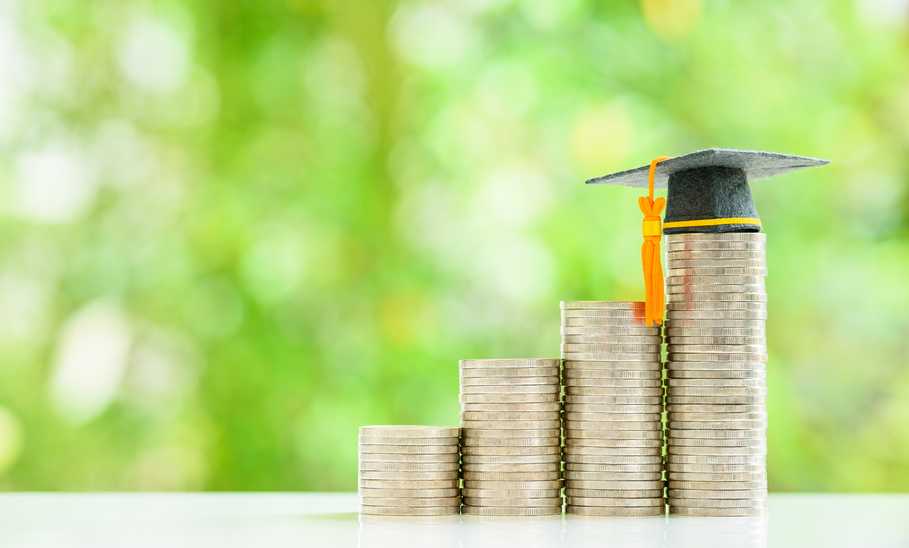Best Student Loan Rates for January 2025

Our evaluations and opinions are not influenced by our advertising relationships, but we may earn a commission from our partners’ links. This content is created by TIME Stamped, under TIME’s direction and produced in accordance with TIME’s editorial guidelines and overseen by TIME’s editorial staff. Learn more about it.
Student loan interest rates vary based on the type of loan, whether or not there is a cosigner, and financial information such as credit score.
Student loans provide financial aid when scholarships and grants are not enough. Unlike scholarships and grants, student loans must be repaid. They also incur interest, which adds to the total amount the borrower will have to pay. Interest rates vary based on the type of student loan. These include federal subsidized and unsubsidized loans, loans for parents and graduate students, and private student loans. Interest rates for all federal loans are fixed for the life of the loan, but private loans could have either fixed or variable rates.
Current interest rates for student loans* first disbursed starting July 1, 2023, and prior to July 1, 2024, are:
| Type of loan | Type of borrower | Fixed interest rate | Variable interest rate |
|---|---|---|---|
Direct subsidized loans and direct unsubsidized loans | Undergraduate students | 5.50% | N/A |
Direct unsubsidized loans | Graduate or professional students | 7.05% | N/A |
Direct PLUS loans | Graduate or professional students and parents | 8.05% | N/A |
Private loans | All borrowers | 4.40% to 16.99% | 5.49% to 16.99% |
*source: https://studentaid.gov/understand-aid/types/loans/interest-rates
When reviewing all existing borrowers, the average student loan interest rate in the United States is 5.8%.
Federal student loan rates are fixed, as noted above. Private student loan rates will vary based on a number of factors, including loan type; whether or not the borrower has a cosigner, credit score and history; and whether the rate is fixed or variable. The following chart looks at interest rates for undergraduate loans.
| Institution | Fixed APR | Variable APR | Term | Minimum credit score |
|---|---|---|---|---|
Federal | 5.50% | N/A | 10 years | None |
3.47%-17.99% | 4.69% – 17.99% | 5 to 15 years | Mid-600s | |
3.74% to 15.49% | 5.37% to 15.70% | 10 to15 years | Mid-600s | |
4.48% to 15.66% | 6.03% to 15.94% | Low- to mid–600s | ||
Splash | 4.42% to 15.90% | 5.89% to 16.20% | 5 to15 years | Mid-600s |
Earnest | 4.42% to 14.90% | 4.99% to 15.30% | 650 | |
SoFi | 4.44% to 14.70% | 5.99% to 13.97% | 5 to15 years | Mid-600s |
4.49% to 14.99% | 6.37% to 16.62% | Varies |
*Interest rates as of Jul. 15, 2024
For federal student loans, Congress sets interest rates every May based on the high yield of the 10-year Treasury note auction.
For private student loans, lenders start with a rate based on the Libor or the Secured Overnight Financing Rate indices, then factor in the borrower’s credit score, credit history, income, and other financial information.
As stated, financial characteristics—credit score, credit history, income, and other financial information—factor into how private lenders determine interest rates. Depending on the loan type, these factors could apply to the borrower, the cosigner, or both.
Credit scores typically range from 300 to 850. The higher the credit score, the more favorably lenders view your application, which generally leads to lower interest rates.
Lenders will review your credit history to determine your debt-to-income ratio (how much you owe versus how much you make) and your payment history on other debts. They also may check to see if you have filed bankruptcy. These factors are used to determine how likely you are to repay your loan. The higher risk you are, the higher your interest rates could be.
Lenders will review your income to ensure you have adequate funds to pay back the loan.
Lenders look for a stable work history to ensure your income will remain steady.
To calculate the amount of interest on your student loan, start by breaking it down by month.
Keep in mind that the monthly rate could change if the loan has a variable interest rate. For loans with a fixed rate, as the loan principal is paid down, the amount of interest paid each month will decrease.
Interest rates on student loans vary based on the type of loan, whether or not the rate is fixed or variable, and—for private loans—certain financial information for the borrower and/or a cosigner, such as credit score, credit history, and income. It’s important to compare all available loan options to determine which one is the best choice for your financial needs.
These are two types of federal student loans. With subsidized loans, interest does not accrue as long as you are in school at least half-time or you are in a deferment period. Unsubsidized loans accrue interest from the time you receive the loan.
With a fixed interest rate, the interest rate will remain the same throughout the life of the loan. With a variable interest rate, the interest rate could change during the term of the loan.
You may be able to reduce your student loan interest rate by signing up for autopay with your lender. Another option to reduce your student loan interest rate is to refinance the original student loan at a lower interest rate. Be aware that if you have federal student loans and you refinance or consolidate them through a private lender, you lose access to protections and special repayment programs available for federal pans.
You can pay off student loan interest early by paying extra on your loan principal each month, applying lump-sum payments such as a tax refund to the loan balance, or applying for student loan forgiveness.
The information presented here is created by TIME Stamped and overseen by TIME editorial staff. To learn more, see our About Us page.



